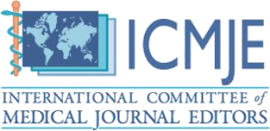Linguistic Trends among Young Sindhi Community Members in Karachi
DOI:
https://doi.org/10.51611/iars.irj.v10i2.2020.124Keywords:
domain, language choices, Karachi, Sindhi, PakistanAbstract
Sindh is a multilingual province with Sindhi as its official language (Abbasi, 2017) and Sindhi is the third most common language spoken in Pakistan. (Census, 2017). However, in the cities of the Sindh province, Urdu the national language, is widely spoken is in constant competition with other regional languages (Ali, 2017). Due to rapid urbanization and modernization, different communities are shifting to cities for better economic conditions. This study explores linguistic trends by investigating the language used by young Sindhi speakers in the city of Karachi and has used Fishman’s domain model (1971). The domain identifies the use of language in different settings between a range of interlocutors and the purpose of communication between interlocutors. The methodology used to collect data was both questionnaire and observation. The results indicates that the use of other languages-Urdu and English is often noted in various domains. Even within the home domain Sindhi speakers are frequently using ‘the other tongue’. This study encourages researchers to study language choices in contact situations in the urban cities of Pakistan.
Downloads
References
Abbasi, M.H. (2017). “Language Shift among Third Generation Sindhi Speakers” presented at International Conference of Linguistic Association of Pakistan (ICLAP), Karachi.
Abbasi, M.H & Aftab, M. (2019). “Mother tongue or other tongue? The case of Dhatki speakers”. Balochistan Journal of Linguistics. 7.81-92.
Ali, S. S. (2010). “Language Attitudes of Educated Pakistanis with Special Reference to Urdu Punjabi, and English”. An Unpublished M. Phil Thesis. Department of English, University of Karachi.
Ali, S. S. (2015). “Minority Language Speakers’ Journey from the Mother tongue to the other tongue: A case study”. Kashmir Journal of language Research, 18(3). 65-81.
Ali, S. S. (2017). “Language Shift and Ethnolinguistic Vitality: a sociolinguistic study of Indigenous minority language speakers in Karachi”. (Phd Thesis, Department of English, University of Karachi).
Anthonissen, C. (2009). “Bilingualism and Language shift in Western Cape communities in Africa”. Mehrsprachigkeit and Sprachenpolitik in Afrika, 32(5), 421-434.
Appel, R., & Muysken, P. (1987). “Language Contact and Bilingualism”. Amsterdam: Amsterdam University Press.
Census. (2017). “Census report of Pakistan”. Islamabad: Population Census Organization Statistics Division. Government of Pakistan.
Charmaz, K. (2006). “Constructing Grounded Theory: A Practical Guide through Qualitative Analysis”. London: Sage Publications.
Cohen, L., Manion, L., & Morison, K. (2013). “Research methods in Education” (7th Ed.) Routledge.
Creswell, J. (2012). “Educational Research: Planning, Conducting, and Evaluating Quantitative and Qualitative Research”. New York: Pearson
Daswani, C. J. and Parchani S. (1978) “Sociolinguistic Study of Indian Sindhi”. Central Institute of Indian Studies. Mysore: CIIL
David, M. K (1996). “Mother-in-law and Daughter-in-law Relationships: A North/South Indian Perspective as Seen in Sindhi and Tamil Proverbs”. Journal of the Malaysian Modern Language Association, 1, 73-80
David, M. K. (1999). “Language Shift among the Sindhis of Malaysia”. South Pacific Journal of Psychology, 10(1), 61-67.
David, M. K. (2000). “The Sindhis of Singapore: Language Maintenance or Language Shift?” Migracijske Teme, 16(3), 271-288.
David, M. K. (2001a). “The Sindhis of Malaysia: A Sociolinguistic Account”. London: Asean
David, M. K. (2001b). “The Sindhis of London: Language Maintenance or Language Shift?” Migracijske I etnicke Teme, 3, 215-238.
David, M. K. (2003). “Reasons for Language Shift in Peninsular Malaysia”. In Ramlah, H. et al. (Eds), Investing in Innovation Humanities Social and Science (pp 111-114). Universiti Putra Malaysia Press, Serdang, Selangor, Malaysia.
David, M.K., Naji, I.M., & Kaur, S. (2003). “Language Maintenance or Language shift among the Pubjabi Sikh Community in Malaysia”. International Journal of the Sociology of the language, 1(161), 1-24.
David, M.K., & Dealwis, C. (2008) “Why shift? Focus on Sabah and Sarawak”. Suvremena Linguistika, 34(66), 261-276.
David, M. K., Ali. M., & Baloch, G. M. (2017). “Language Shift or maintenance: The Case of Sindhi Language in Pakistan”. Language Problem & Planning, 41(1), 26-45.
Dewan, R. (1987). Deethnisation: “A study of language and culture change in the Sindhi immigrant community of Metro Manila”. Unpublished Ph.D. Thesis De la Salle University.
Duff, A.P. (2008). “Case Study Research in Applied Linguistics”. New York: Lawrence Erlbaum Associates.
Fase, W., Jaspaert, K., & Kroon, S. (1992). “Maintenance and loss of minority languages”. (1st Ed.). John Benjamin’s publishing.
Fasold, R. (1984). “The Sociolinguistics of society”. Oxford: Blackwells.
Fishman, J. (1971). “Advances in the sociology of language”. The Hague: Mouton.
Fishman, J. (1991) “Reversing Language Shift: Theory and Practice of Assistance to threatened languages”. Clevedon, UK: Multilingual Matters.
Gal, S. (1979). “Language Shift: Social determinants of language change in bilingual Austria”. New York: Academia.
Hofman, J., & Cais, J. (1984). “Children's attitudes to language maintenance and shift”. International Journal of the Sociology of Language, 50, 147-153.
Iyengar, A. (2013). “Self-perceptions of heritage language shift among young Sindhis in Pune”. Masters in Applied Linguistics, University of New England, Australia.
Johnson, D. M. (1992). “Approaches to research in second language learning”. New York: Longman.
Dumanig, F., M. K. David, L. A. (2020). Channa, and S. A. Manan. “Language Shift and Ethnic Identity: Focus on Malaysian Sindhis”. IARS’ International Research Journal, vol. 10, no. 1, Feb. 2020, DOI/URL: https://researth.iars.info/index.php/curie/article/view/92.
Khan, R.K. (2014). “A Sociolinguistic Analysis of Classroom Discourse with Special Reference to Code-Switching”. An Unpublished Ph.D. Thesis. Department of English, University of Karachi.
Letsholo, Rose. (2009). “Language maintenance or shift? Attitudes of Bakalanga youth towards their mother tongue”. International Journal of Bilingual Education and Bilingualism, 12(5), 581-595.
McDonald, S. (2005). “Studying actions in context: A qualitative shadowing method for organizational research”. Qualitative Research, 5(4), 455-474.
Mukeerjee, D. (2003). “Role of women in language maintenance and language shift. Focus on the Bengali Community in Malaysia”. International Journal of Sociology of the language. 161, 103-20.
Nawaz, S., Umer, A., Anjum, F., & Ramzan, M. (2012). “Language Shift: An Analysis of Factors Involved in Language Shift”. Global Journal of Human Social Science Linguistics & Education, 12(10), 73-80.
Nazir, B., Aftab, U., & Saeed, A. (2013). “Language Shift – The Case of Punjabi in Sargodha Region of Pakistan”. Acta Linguistica Asiatica, 3(2), 41-59.
Rahman, T. (2002). “Language, Ideology and Power: Language Learning among the Muslims of Pakistan and North India”. Oxford University Press: Karachi.
Rahman, T. (2006). “Language Policy, Multilingualism and Language Vitality in Pakistan”. In A. Saxena, & L. Borin, (Eds.), Trends in Linguistics: Lesser-Known Languages of South Asia-Status and Policies (Case Studies and Applications of Information Technology (pp. 73-104). Berlin and New York: Mouton de Gruyter.
Romaine, Suzane. (1994). “Language in society: An introduction to sociolinguistics”. New York: Oxford University Press.
Savin-Baden, Maggi., & Major, Calire Howell. (2013). “Qualitative Research: The essential guide to theory and practice”. Routledge.
Scotton, Carol Myers. (2006). “Multiple Voices: An Introduction to Bilingualism”. UK: Blackwell Publishing Ltd.
Umrani, Sumera. (2015). “Constructing, Negotiating and reconstructing English Language Learner Identity: A Case Study of Public Sector University in Postcolonial Pakistan”. Doctoral thesis. University of Edinburgh.
Umrani, Sumera. & Memon, Natasha. (2016). “Language Shift and maintenance: A case study of a Pakistani Scottish Family”. ELF Annual Research Journal, 18, 43-64.
Zaid, A. R. M., Mee, M. Y., & Hei, K. C. (2012). “Language Choice of Malaysian Chindians. Language in India”. 12(11), 440-46. Retrieved on 24th March 2015, from http://www.languageinindia.com/nov2012/kuangchindiansfinal.pdf.
Downloads
Published
Issue
Section
License
Copyright (c) 2020 Muhammad Hassan Abbasi, Prof. Maya Khemlani David, Prof. (Dr.) Sajida Zaki Sajida

This work is licensed under a Creative Commons Attribution 4.0 International License.
Author(s) hold complete right on the content of this article. Copyright to the content are governed as per Copyright Policy of the Journal.





















